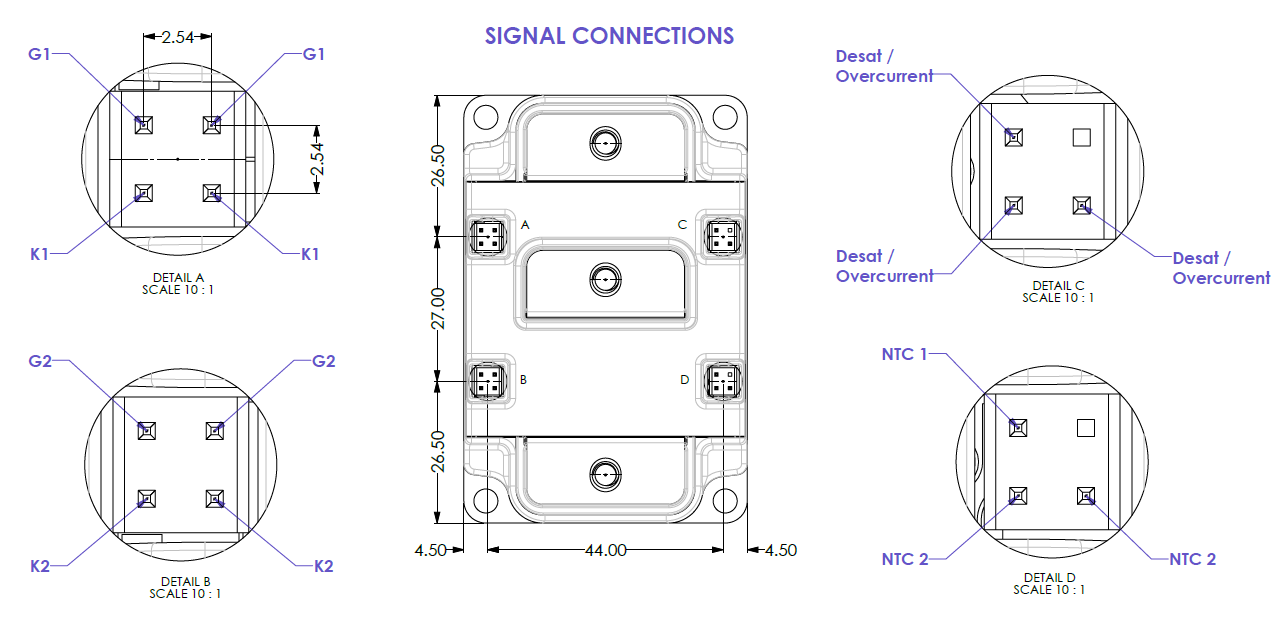TIDUF23 may 2023
- Description
- Resources
- Features
- Applications
- 5
- 1System Description
- 2System Overview
-
3Hardware, Software, Testing Requirements,
and Test Results
- 3.1 Hardware Requirements
- 3.2 Test Setup
- 3.3 Test Procedure
- 3.4 Test Results
- 4General Texas Instruments High Voltage Evaluation (TI HV EVM) User Safety Guidelines
- 5Design and Documentation Support
- 6Terminology
3.1.1.6.3 Module Signal Terminals
The signal pins on the XM3 module consist of four sets of male header pins grouped by function located on the left and right edge of the module as shown in Figure 3-8. Along the left side are the gate pins for both the high side and low side switch positions and their associated source-kelvin pins. In the upper right position is the Desat/Overcurrent pins which are internally connected to the V+ power terminal to provide a connection point for high side gate driver protection circuitry to measure VDS. In the lower right position are the pins for the internal negative temperature coefficient (NTC) temperature sensor. The NTC is located on an electrically isolated substrate pad in close proximity to the lower switch power devices and can need additional galvanic isolation according to application requirements. With UCC5880-Q1 gate driver the NTC measurement signal is isolated up to 5.7 kV. The signal connectors on the right side both have one pin not populated so that the gate driver can be keyed to prevent improper installation.
 Figure 3-8 XM3 Module Signal Terminal
Pinout
Figure 3-8 XM3 Module Signal Terminal
Pinout